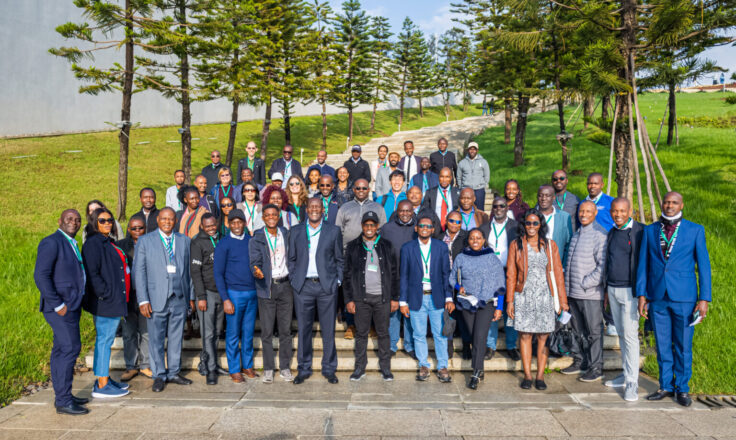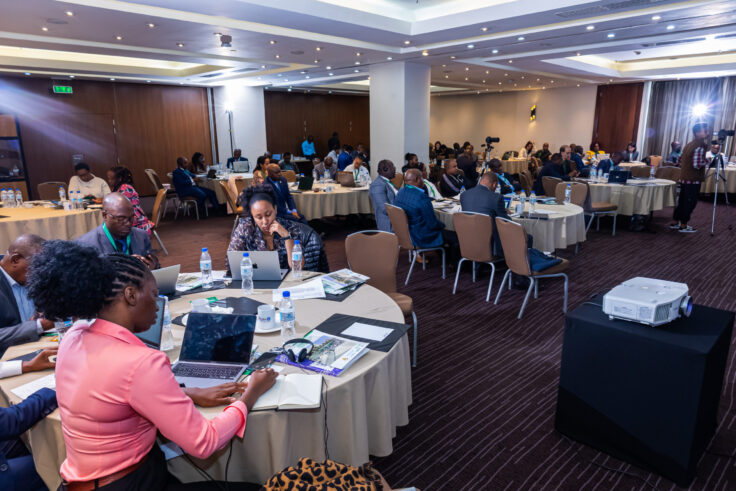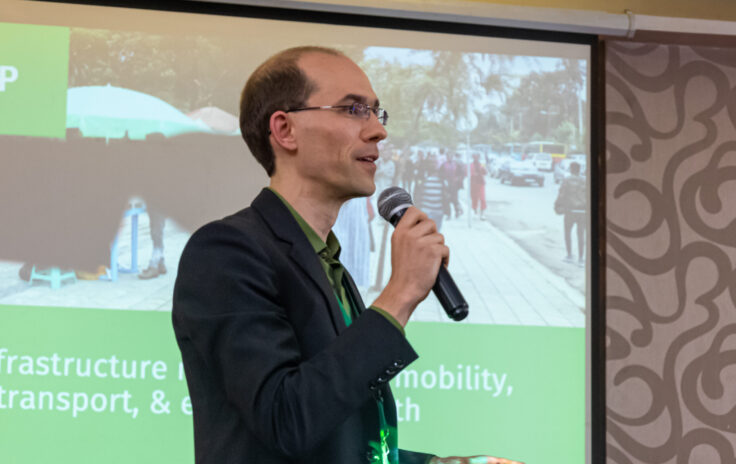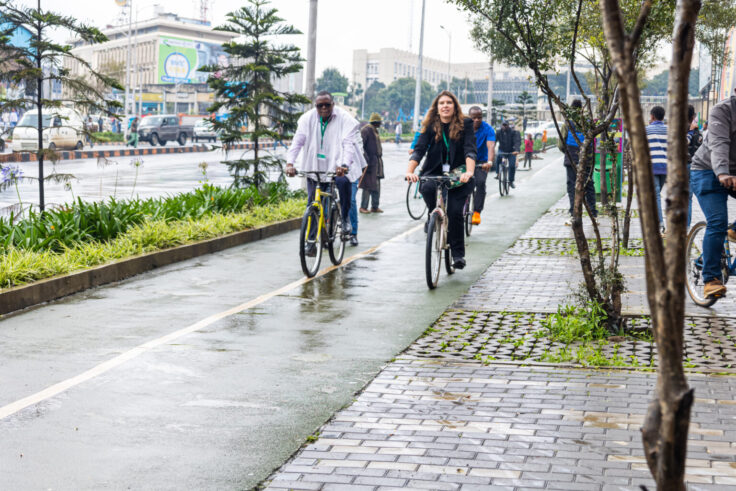September 16, 2023
Achieving A More Sustainable Future for Africa’s Cities Through Transport
Africa’s cities are undergoing a profound transformation, driven by a pressing need to cater to the continent’s rapidly urbanizing population.
This article was originally published by ITDP Africa here.
Cities around the continent are embracing forward-looking urban planning and sustainable public transport solutions to meet this escalating demand. Yet, this endeavor is no small feat. Governments are faced with a challenging problem, contending with the vast gap between the infrastructure required to support rapid urbanization and the available resources. Complicating matters further are the global surge in inflation and mounting fiscal uncertainties worldwide. Another layer of complexity lies in the unfinished business of restructuring governance to promote devolution and the financial independence of urban local bodies on the continent. More robust governance is critical to the seamless implementation and operational success of modern mass rapid transit systems and the integration of urban infrastructure in African cities.
To address challenges and opportunities in implementing sustainable urban transport in Africa, ITDP Africa, International Climate Initiative (IKI), African Development Bank (AfDB), UN-Habitat, Children’s Investment Fund Foundation (CIFF), UN Economic Commission for Africa (UNECA), UNEP, and United Nations Road Safety Fund organized a conference under the theme Sustainable Cities Through Transport: Improving Financing Mechanisms and Institutional Capacity, which took place in Addis Ababa, Ethiopia in August 2023 and included participants from 11 countries (Burundi, Ethiopia, Djibouti, Guinea, Ghana, Kenya, Uganda, Tanzania, Rwanda, Mozambique, and Nigeria).

Day One
H.E. Berio Hassan, the State Minister, Ministry of Transport and Logistics, Ethiopia, opened the conference, outlining key achievements in the country, including the implementation of 46 kilometers of cycle tracks and 40 kilometers of wide sidewalks in the capital of Addis Ababa. In addition, he mentioned that secondary cities have constructed over 80 kilometers of footpaths and 36.5 kilometers of cycle tracks with support from the federal government and development banks. Addis Ababa has also secured financing for two out of fifteen planned BRT corridors, and construction is ongoing for the city’s B2 BRT corridor. The City of Addis Ababa is also an active member of ITDP’s global Cycling Cities campaign, which seeks to bring 25 million more people closer to safe cycling access by 2025.
Babati Mokgethi, Senior Urban Development Specialist, AfDB, gave introductory remarks, outlining the Bank’s support in ensuring Africa’s cities are efficient, sustainable, and integrated. He emphasized the importance of a holistic approach to mobility planning, ensuring that urban streets facilitate efficient mobility, social interaction, and safe access for users of all ages, genders, and abilities. He noted that cities need to offer financially viable solutions that give people alternatives to the use of private vehicles, which are contributing to congestion, poor air quality, and rising emissions. AfDB is working on a range of urban infrastructure projects including the Sheger Riverside Redevelopment in Addis Ababa; the USD $159.3 million Dar es Salaam BRT Phase 2; non-motorized transport (NMT) and junction improvements in Kigali; and a roads rehabilitation project in Kampala. The Bank is also engaging local governments to discuss plans for additional urban development projects across the continent.

Chris Kost, Director of ITDP Africa, highlighted the advantages of investing in sustainable transport for Africa’s largest cities based on the team’s Why Infrastructure Matters report. Under the status quo, increased private vehicle use will continue to lead to wider roads, higher costs, more accidents, and greater emissions in cities. By focusing on active mobility and public transport, cities can save an estimated USD $109 billion in avoided expenditures on fuel; reduce crash fatalities by 63%; lower infrastructure costs by 43%; and decrease carbon emissions by 63%.
Kicking off the session on planning and implementing safe and efficient public transport, Dr. Edwin Mhede, Chief Executive of the Dar Rapid Transit Agency (DART) outlined the need for stronger governance and political commitments to rapid transit. Dar es Salaam’s experience in operating the 20.9-kilometer Phase 1 corridor of the DART BRT, and the ongoing expansion and financing of phases 2, 3, 4, and 5, offered lessons on the need for robust institutional capacity in order for public transport authorities to fulfill their mandates. Representatives from Addis Ababa, Nairobi, and Kampala also presented ongoing BRT plans in the respective cities.

Bus sector modernization was also highlighted as key to ensuring inclusive and equitable access to transport systems. Most cities in the region have a below-average representation of women in the transport sector, both in government and private sector. As the industry modernizes, there is a need to ensure women are included in the process. To address these inclusion challenges, representatives from the City of Kigali, DART, the Nairobi Metropolitan Transport Authority (NaMATA), and the Kenya Urban Roads Authority (KURA) outlined ongoing initiatives to involve women in the public transport industry transition process, and to design more streets that are inclusive of women, children, and persons with disabilities. ITDP Africa also presented its recent study on Gender Equity in Cairo’s Greater Public Transport System, which draws on feedback from the city’s female public transport users. Cairo’s future BRT plans aim to ensure improved accessibility through comfortable walking and cycling facilities; safe and accessible stations; adequate planning to reduce crowding on buses; and mixed-use development to ensure security on the streets.
To tackle public transport financing issues head-on, AfDB, the World Bank, the European Investment Bank (EIB), and government officials from Ghana and Mombasa engaged in a focused dialogue on finance mechanisms. AfDB’s ten-year strategy spotlighted inclusive and green growth, demonstrated through financing for urban transport projects across Africa. EIB emphasized climate action and better livelihoods, pointing to the Bank’s ongoing support for the fully electric BRT Line 3 project in Nairobi. The World Bank also showcased plans for equitable and sustainable transport upgrades in Nairobi and Kigali, spanning dedicated bus lanes, bus terminals, and commuter rail connectivity.

Day Two
The second day of the conference focused on improving NMT conditions to improve equity and accessibility in cities. Janene Tuniz from UN Environment highlighted the challenges facing African cities in terms of walking and cycling environments and introduced the Pan African Action Plan for Active Mobility (PAAPAM), which aims to create better walking and cycling conditions, protect road users, and improve access to public transport. PAAPAM also seeks to consolidate efforts on NMT in the region by defining common priorities, encouraging financial investments, promoting dialogue, and identifying key indicators to track progress.
Fetiya Degdeba from the Road Safety and Insurance Fund Service in Ethiopia discussed the concept of complete streets, inclusivity, and community-driven development. She recounted the evolution of NMT planning in Ethiopia, including the adoption of the Addis Ababa NMT Strategy, which involved the allocation of city funding to active mobility infrastructure. After a successful implementation, with noticeable ongoing results, the federal government adopted a national NMT Strategy, leading to an increase in walking and cycling investments in secondary cities. The session then included the soft launch of the Ethiopia Street Design Manual, which aims to harmonize guidelines and standards across the country and facilitate the design of streets that serve all users, including pedestrians, cyclists, public transport passengers, motorists, and freight.

All of the delegates engaged in a thought-provoking panel discussion on the financing of public spaces in African cities. The panelists included representatives from Nairobi City County, the Tanzania Rural and Urban Roads Agency (TARURA), City of Quelimane, City of Kisumu, and City of Kigali. Dr. Manuel de Araujo, the Mayor of Quelimane City, shared insights into the financing of public spaces in Mozambique and discussed the political and financial challenges in spearheading the shift to cycling. Quelimane, located in northern Mozambique, has successfully built a cycling culture by constructing the first protected bike lane in the country. The Mayor himself promotes cycling, encouraging visiting dignitaries to explore the city by bicycle and facilitating livelihoods for 4,000 young people who work as bicycle taxi drivers.
Solving existing urban transport challenges will require a strategic, integrated approach to urban planning. Cities in the region are working towards urban planning policies that link transport investments and zoning regulations to provide access and efficiency. In a panel on integrated urban planning and transit-oriented development (TOD) financing through land value capture, Eng Njenga, Secretary of Urban and Metropolitan Development, Ministry of Lands, Public Works, Housing, and Urban Development for Kenya presented strategies for the national government to plan more affordable housing projects at transport nodes. Eng Kuganda from DART outlined ongoing policy work to lay the groundwork for TOD implementation along the BRT corridors in Dar es Salaam. Babati Mokgethi from AfDB presented opportunities for land value capture and green bonds to finance urban and transport improvements in addition to funding from development banks.

During the conference, participants had an opportunity to visit different mobility projects in Addis Ababa. On the first day, participants visited the Sheger Riverside development, a greenway along the rivers of Addis Ababa. The project is partly funded by AfDB and aims to provide access to public transport modes and connectivity to the city’s NMT network. In addition to improving the environment and liveability, the initiative is expected to improve local real estate values and revenue generation in the area.
During the second day, participants visited Churchill Avenue, a multi-modal corridor with wide walkways, a bi-directional cycle track, and a mix of adjoining land uses. Street activity is encouraged by street furniture and the inclusion of trees and landscaping. To increase the available space for walking, the government negotiated with property owners to open up the lower floors of buildings to create more pedestrian arcades. The project has resulted in a more conducive walking and cycling experience and has spurred business for restaurants, commercial spaces, and area businesses.
The conference ultimately proved to be a valuable platform for delegates to shape strategies and reimagine project execution for sustainable, integrated urban development in Africa. Government representatives used the opportunity to refine project plans, and multilateral development banks committed to working with stakeholders to offer technical and financial support in project preparation and implementation. Agencies also began considering new approaches to public-private partnerships and local revenue generation through land value capture and green bonds to buffer existing economic conditions.

This gathering offered a promising path forward for key stakeholders in ITDP Africa’s network, all of whom will play a crucial role in advancing much-needed investments into sustainable mobility projects across African cities.
